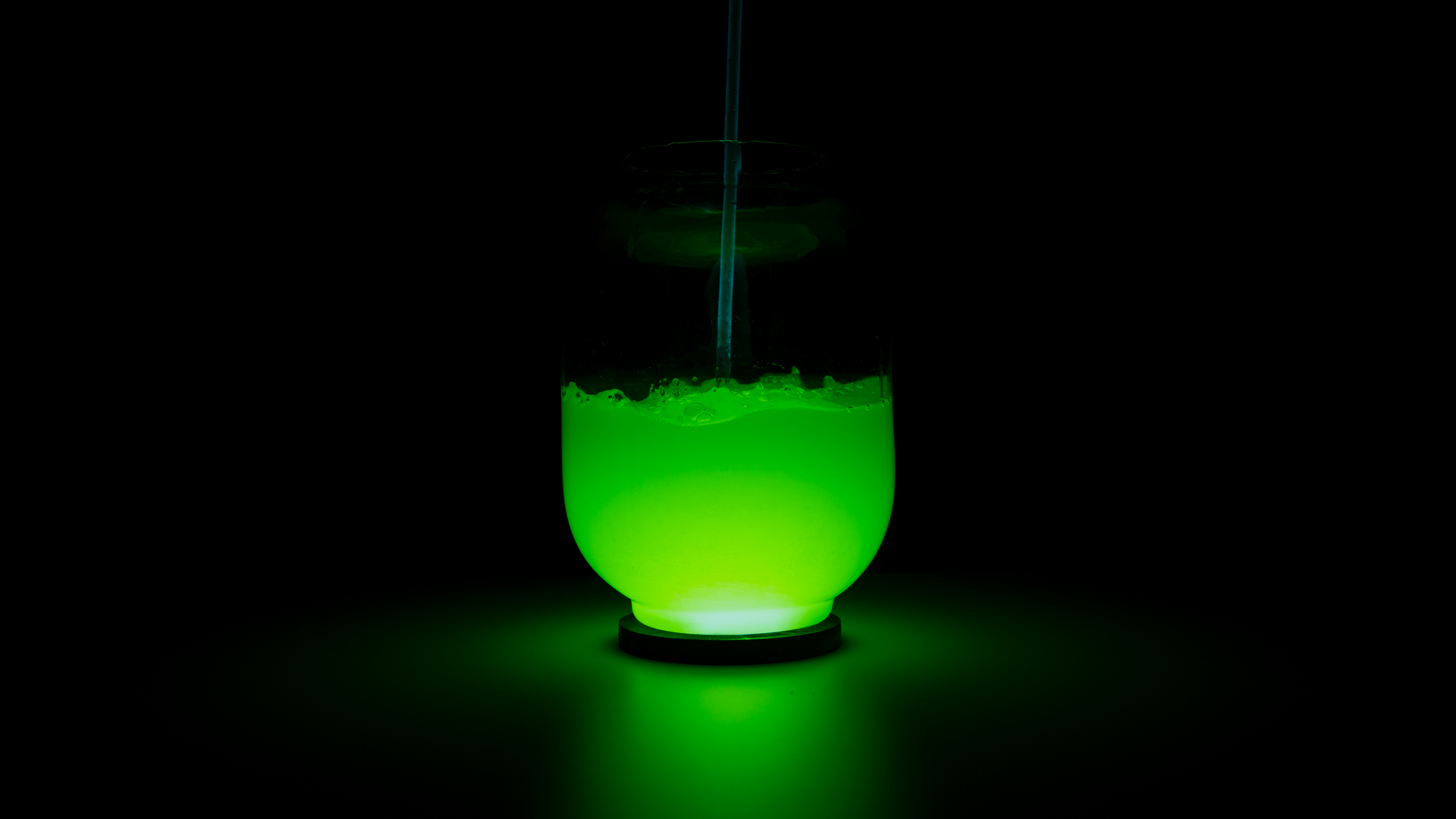
Within the scope of our bachelor’s thesis we dealt with microalgae and discovered their numerous beneficial properties. The fascination that was then triggered within us is transferred to the outside world in the form of an informative exhibition: “Fascination Microalgae” lets the exhibition visitor experience the potential of microalgae by demonstrating exemplary applications.
Bachelor Thesis
Nicole Häring
Lea Dörr
Supervisor
Gabriele N. Reichert
Matthias Held
2019/2020
Hochschule für Gestaltung
Schwäbisch Gmünd
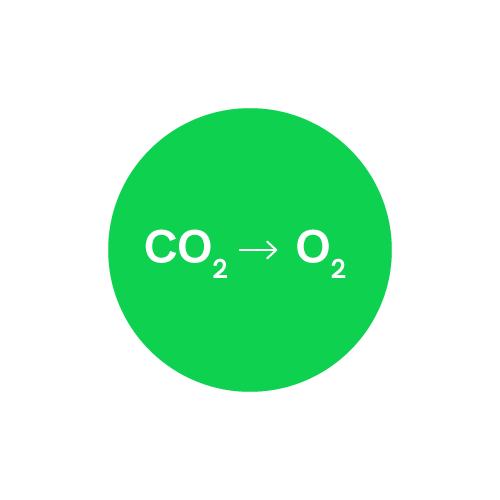
Photosynthesis
Algae, like most plants, perform photosynthesis, which means they convert carbon dioxide into oxygen. About 50 percent of the oxygen in our atmosphere is produced by algae. Algae are therefore much more efficient at purifying air than ordinary plants.
In this way, together with other ocean plants, they form the largest CO2 reservoir and thus significantly counteract climate change.
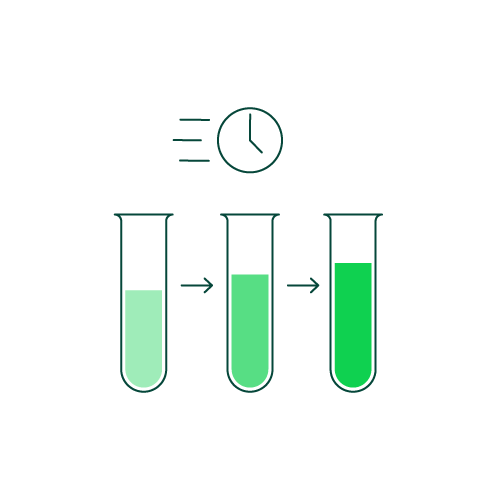
Growth
Microalgae reproduce very quickly – they can double within 24 hours. By photosynthesis two grams absorbed CO2 into one gram of valuable biomass is converted. Since algae only emit light, water, carbon dioxide and need a small amount of nutrients, they are a sustainable and rapidly renewable raw material.
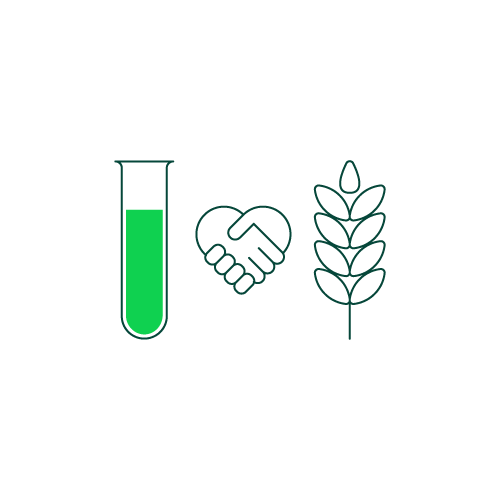
No competitor
To sustainably supply the growing world population with food, raw materials and energy in times of climate change is probably one of the greatest global challenges of the 21st century.
One possible solution is the cultivation of microalgae, which can be carried out in water or reactors without competition with agricultural land.

Antisepsis
Researchers have found ingredients with antiseptic effects in various algae. For example, these ingredients stop the communication between the bacteria and thus prevent the outbreak of various diseases, such as cholera, tuberculosis and food poisoning.

Colour pigments
Colour pigments can be obtained by drying and mechanically breaking down microalgae. By combining the various colouring substances, such as chlorophyll and phycocyanin, a wide colour spectrum can be generated. These colour pigments can be used, for example, to dye textiles, for which environmentally harmful chemicals are usually often used. Many colour pigments from algae are even food safe and are already used for dyeing in the food industry.

Omega-3 fatty acids
Omega-3 fatty acids are polyunsaturated fatty acids which the body cannot produce itself, so they have to be supplied through food. These fatty acids are important for the normal functioning of our heart, our sight and our brain. Almost everyone has an omega-3 fatty acid deficiency – the daily need of 2000 mg could easily be covered by the consumption of microalgae.

Energy production
One possibility for energy production by algae is biophotovoltaics.
Due to their photosynthetic properties, algae can convert light into electricity. During photosynthesis, electrons are produced, up to 75% of them can be directly taken off and stored. These can then be used in the form of electric current. Compared to synthetic solar cells, the power output is still significantly lower. However, since energy consumers are also becoming more and more efficient (see the development from the light bulb to the LED), this type of energy generation will become increasingly important.

Bioluminescence
Bioluminescence is the generation of light by living organisms. This phenomenon is also known as marine luminescence. This glow is mainly produced in the sea by microalgae of the group ‘dinoflagellates’.
During the day, the algae generate energy from the sun, which they emit again at night in the form of light pulses as soon as they start to be moved.
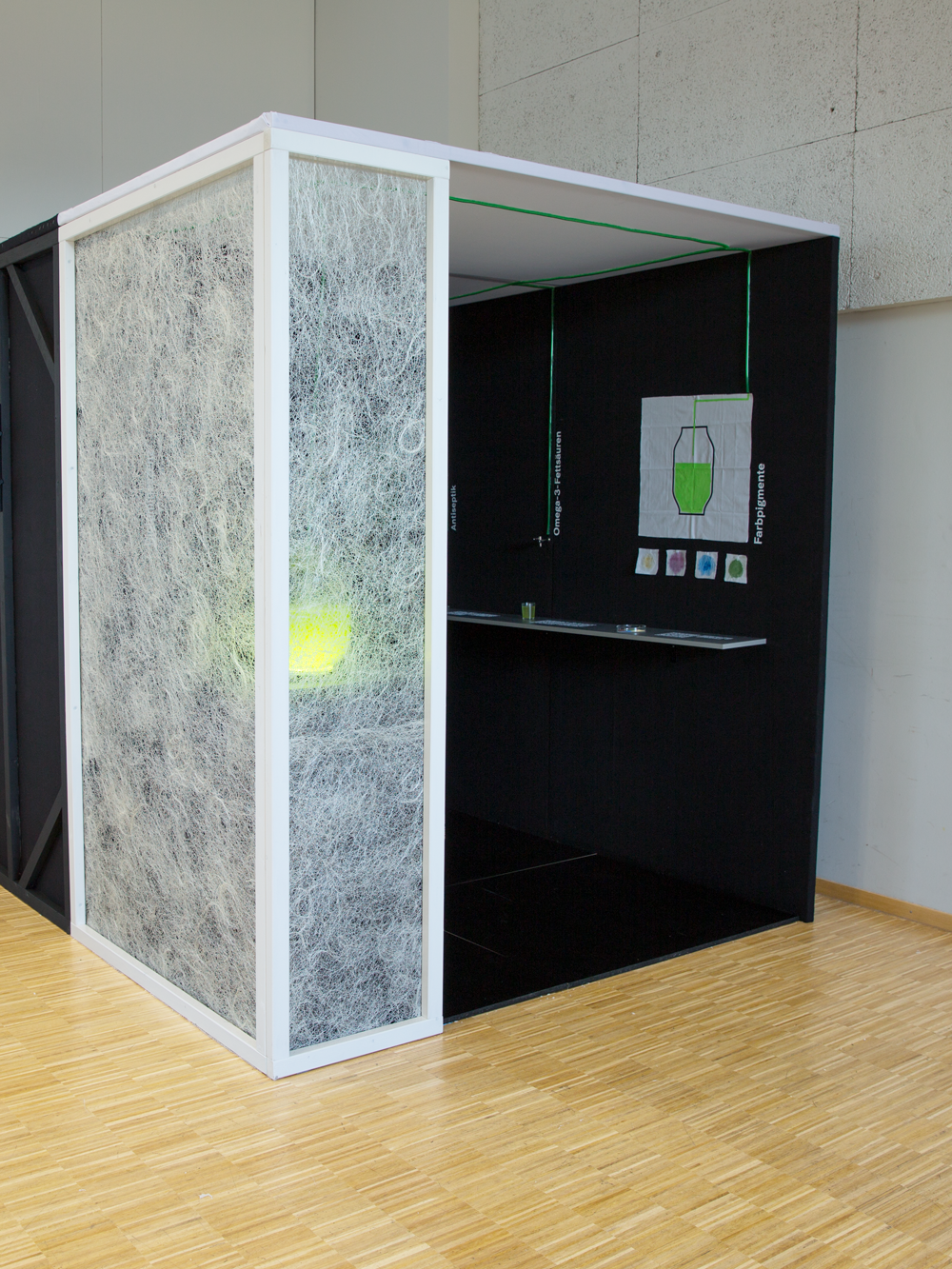

The Exhibition Room
For the exhibition ‘Fascination Microalgae’ we needed a room whose requirements we gradually worked out through testings. The room, which is about 2×3 metres in size, should be partially translucent so that the centrepiece, the luminous Chlorella vulgaris, can attract attention from outside. Inside, there is a room within the room that makes the darkness, which is necessary for bioluminescence, possible. A guide leads the visitor through the exhibition and symbolically supplies all the applications with the microalgae Chlorella Vulgaris.
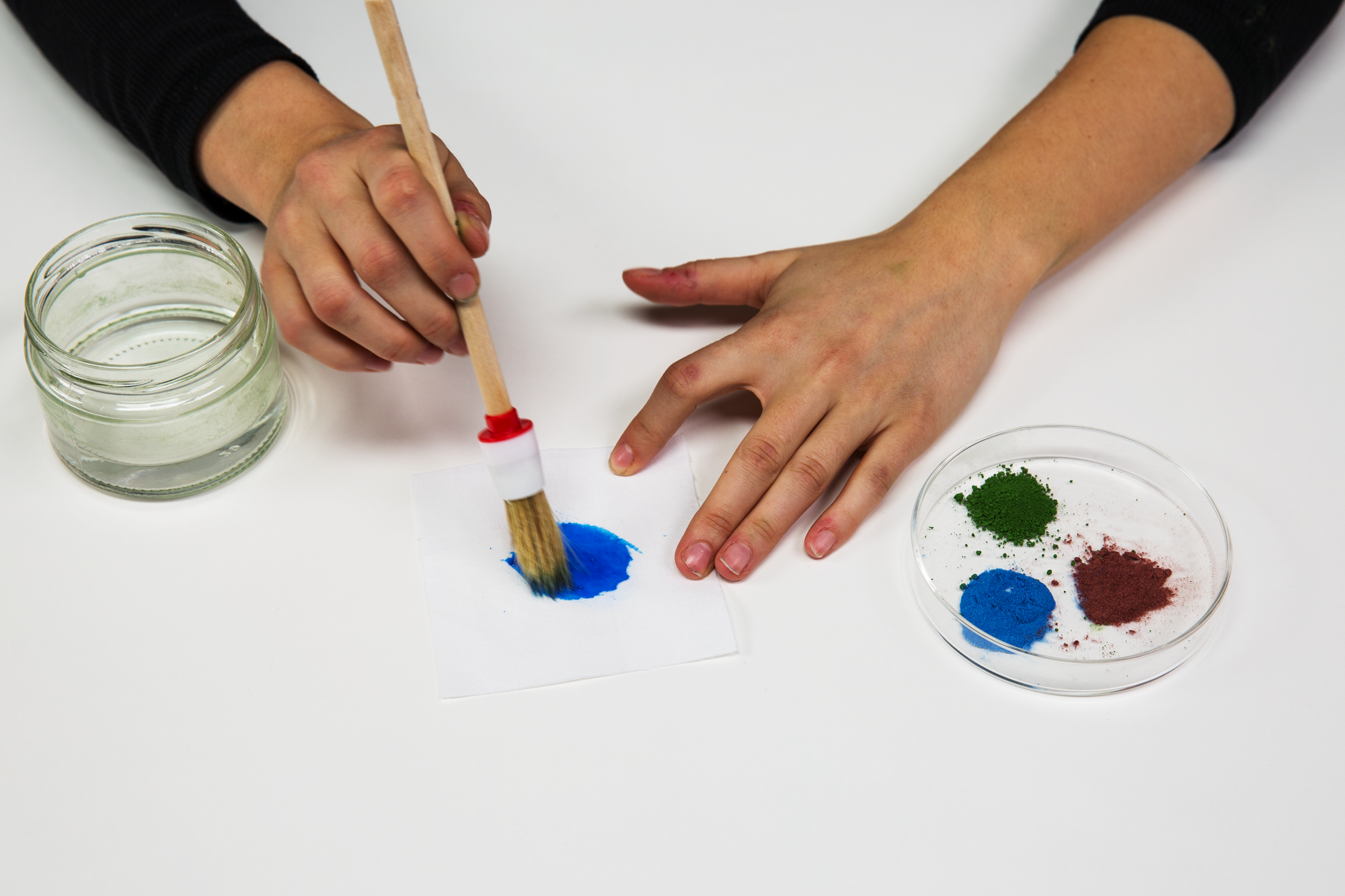
Colour Pigments
In the exhibition, we do not want to limit the potential of colour pigments by a product that is too finished, but rather inspire and inform through experimental and open-minded demonstration of the possible.
Therefore we show the pulverized color pigments in a petri dish and additionally show dyed fabrics. We would also like to exhibit a high-quality print as an example.
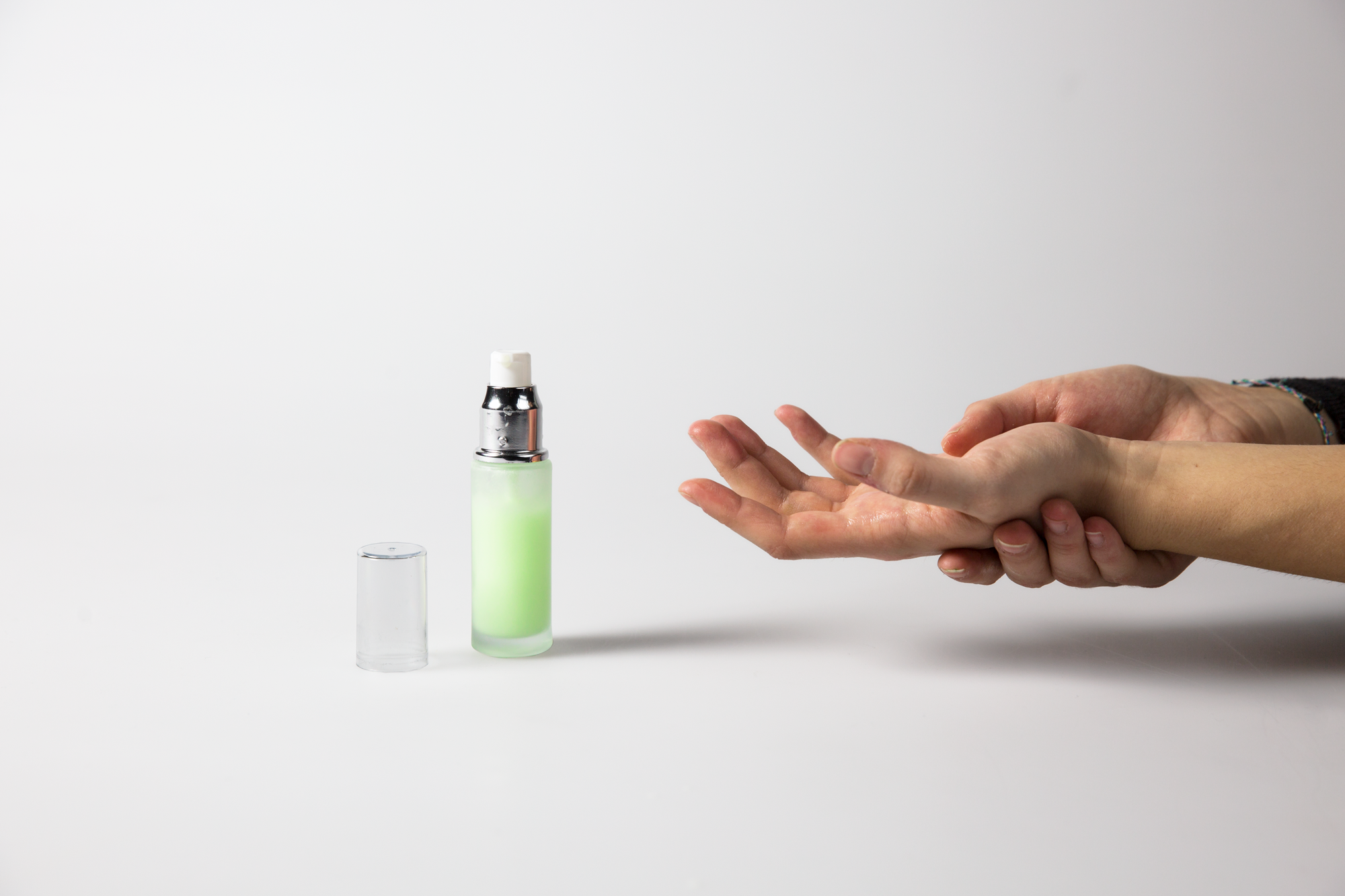
Antisepsis
Also in terms of antiseptics, we decided against a specific product and instead went for an open staging. We want to provide information about the antiseptic effect of algae and exhibit an antiseptic gel that can be interpreted as hand disinfection, for example. In order to radiate purity and fascination, the algae gel is a clear gel with a greenish-bluish glow.
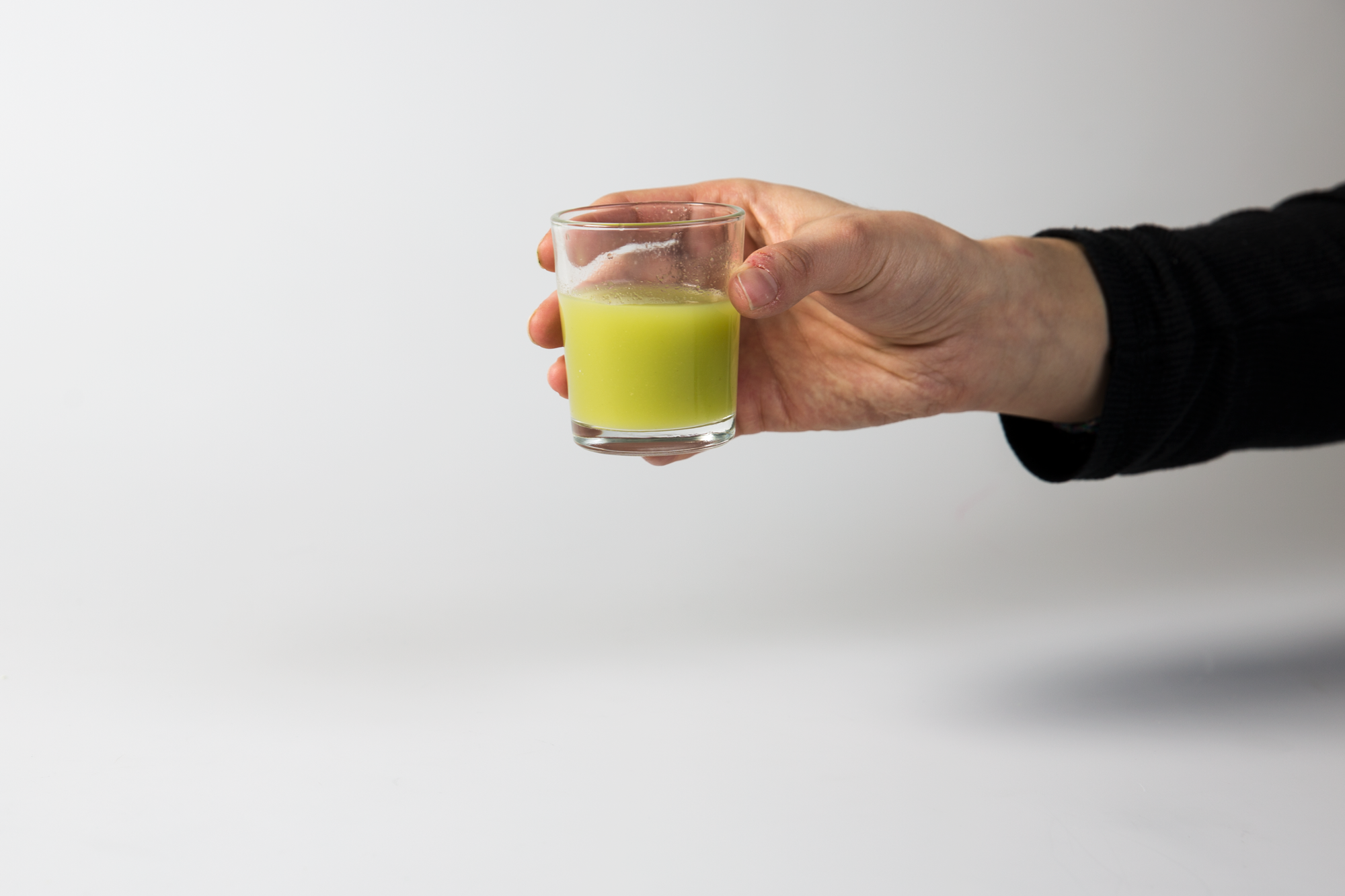
Omega-3 fatty acids
We want to communicate the urgency that humans should consume omega-3 fatty acids.
Probably the best known source of these fatty acids is fish, such as salmon. However, fish only has omega-3 fatty acids because it previously consumed them through algae. We would like to question whether we should therefore cover our daily requirement of omega-3 fatty acids with about 250 grams of salmon or rather with a freshly tapped glass of microalgae.
This is how we would like to demonstrate the possibility of consuming microalgae at the exhibition: from a tap embedded in the wall, one can symbolically draw microalgae liquid from the pipe. The big advantage here is that the fresh microalgae have not yet oxidised and have therefore not yet developed the typical fishy taste and smell.

Air purification
The fact that algae carry out photosynthesis and thus convert CO2 into oxygen is probably one of the strongest algae properties, which is a side effect of all applications. We would like to emphasize this algae property even more strongly and demonstrate the air-purifying effect. In order to be able to absorb as much CO2 and release oxygen as possible, living algae are brought to a moisture-absorbing surface. This surface only needs to be watered about every two weeks so that the algae can survive on it. We’ve decided that the surface should be a three-dimensional structure, so that the surface area can be maximized on a small base area. The design remains very neutral and experimental, so that visitors to the exhibition can imagine the living algae air purification both in their own homes and in an urban context.
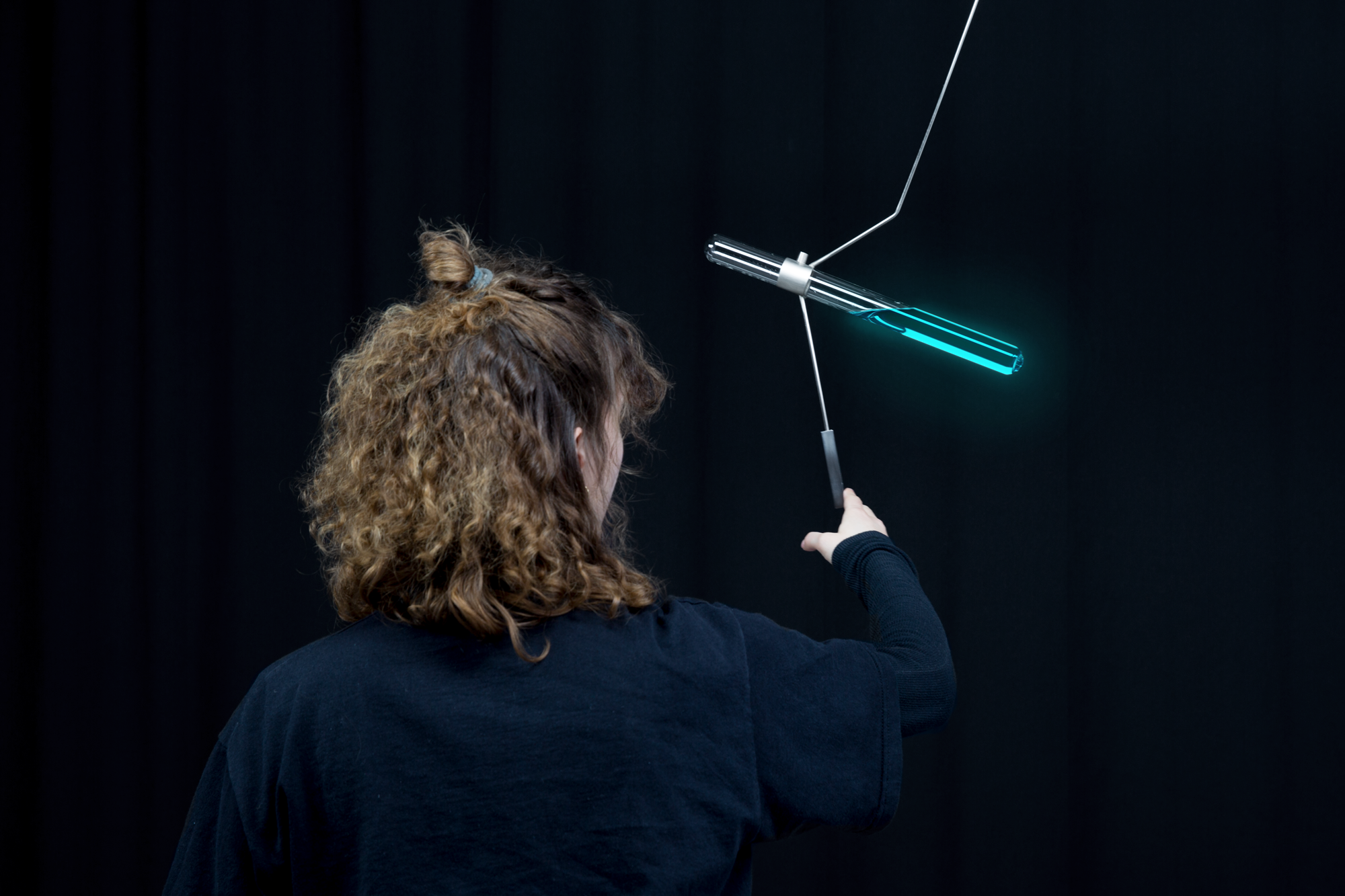
Bioluminescent Pendulum
One could probably describe bioluminescence as the most impressive property of microalgae.
In the exhibition, the visitor is supposed to set the microalgae of the group ‘dinoflagellates’ in motion in order to experience bioluminescence by oneself.
After many tests, we decided to use a pendulum that, with its smooth and steady movement, put the focus on the bioluminescence itself. Due to the total rounding at the ends of the pendulum, the algae slosh back and forth wave-like, which brings back the reference to the sea.
The opening to the vessel enables the pendulum to be filled and emptied as well as it allows the algae to exchange gases.
The asymmetry is necessary for the ergonomic filling and makes the object interesting even in static condition. If the pendulum is in motion, the entire structure recedes into the background and the focus is on the bioluminescent algae.

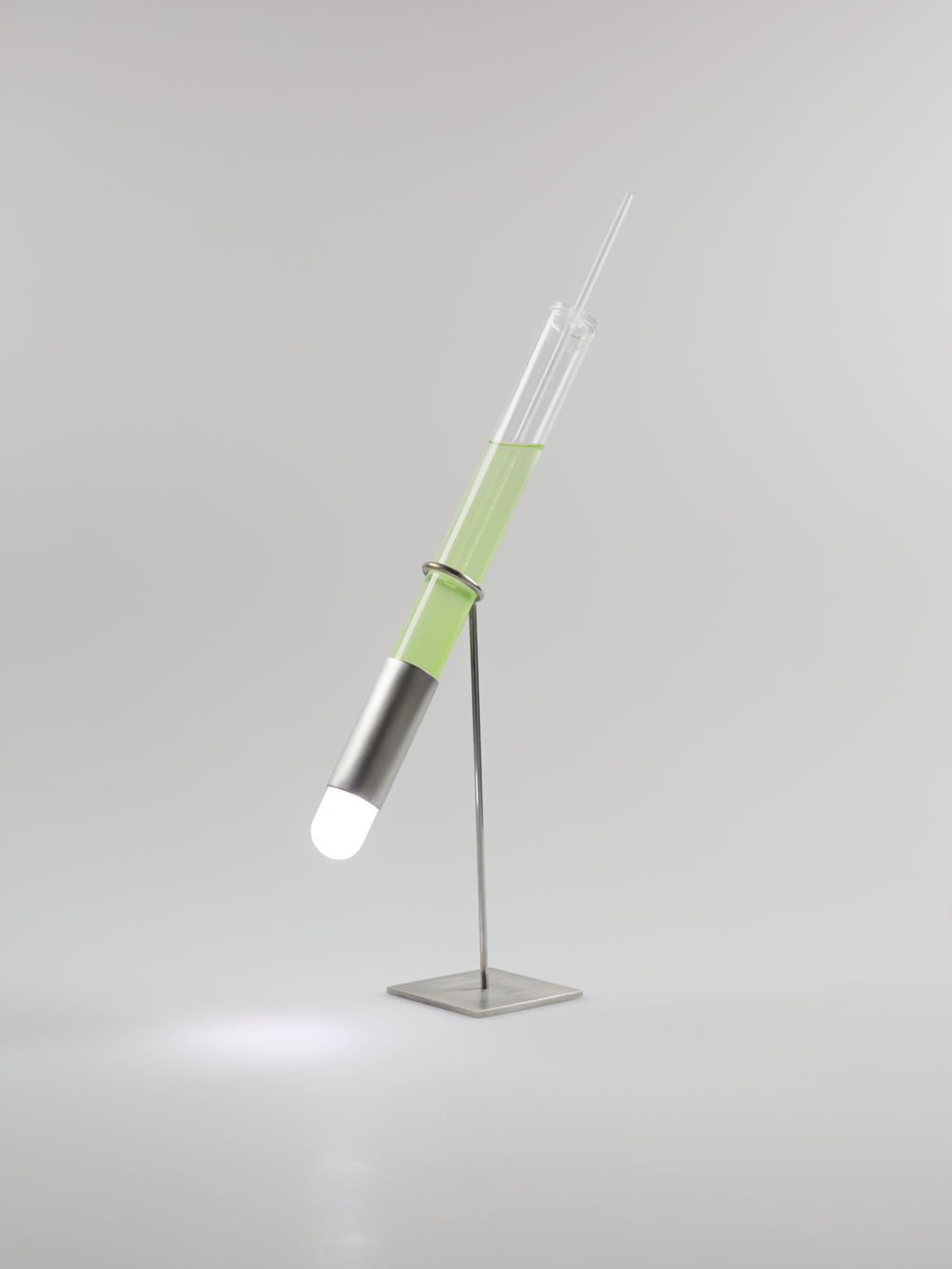
Energy Luminaire
For our application of energy production with microalgae, the following components are needed: the algae itself, of course; CO2 and sunlight to generate energy; a battery to store the energy and a consumer – we have chosen an LED, which does not require much energy but has a strong visual effect. The design of the energy light is very similar to that of the bioluminescent pendulum and is also very experimental. Through the test tube the algae are optimally supplied with sunlight, additionally the tube can be bubbled into the algae to supply them with additional CO2.
All electrical components are located in the cuff, by tapping the cuff the light can be switched on and off. A shortened and sandblasted test tube serves as a diffuser and distributes the light evenly.
Reflection
Since Fascination Microalgae is my bachelor’s project, it was probably one of my most extensive projects during my studies. Both the futuristic approach and the extent of the communicative part of the project were rather new to me, so I was able to learn a fair bit here. Since we had a lot of various ideas in which direction we could push the project or what kind of product out of algae would come out in the end, we felt a lot of uncertainty. In retrospect, I wish we had made decisions earlier so that we could have gone more in depth.
My contribution
I was equally involved in the conception and ideation as my project partner Nicole. I contributed to the project a large part of the CAD models and the model making. I also made the photos and the video including editing.
For deeper insights, have a look in the documentation.